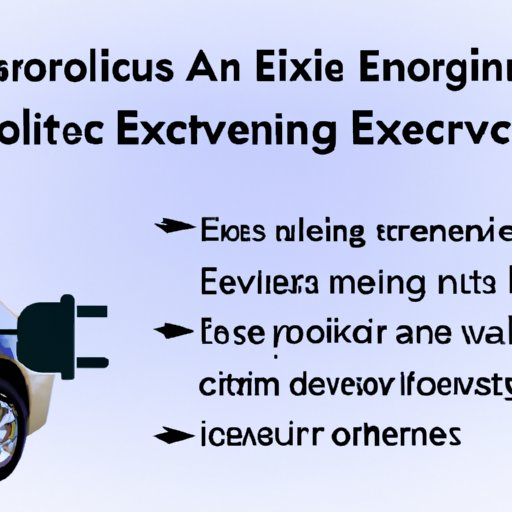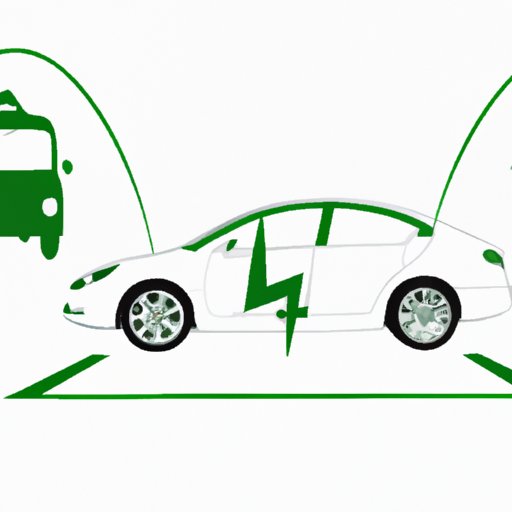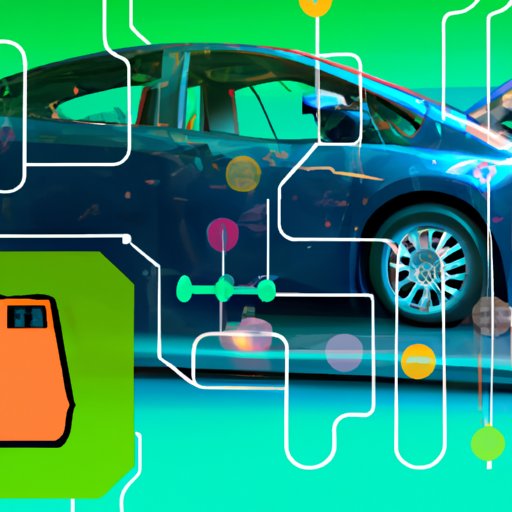Introduction
Electric cars have been around for over a century, but it wasn’t until recently that they began to gain traction in the automotive industry. The first electric car was created in 1884, but the technology has evolved significantly since then. Now, electric cars are becoming more popular due to their environmental benefits, cost savings, and performance. In this article, we will explore how an electric car works, the components that make up an electric vehicle (EV), and the benefits of owning one.
Anatomy of an Electric Car
To understand how an electric car works, it is important to first understand the components that make up an EV. There are four main components of an electric car: the battery, motor, controller, and charging system. Let’s take a closer look at each component and how they work together.
Battery
The battery is the heart of any electric vehicle. It is responsible for storing energy and providing power to the motor. The type of battery used in an EV depends on the model and make of the car. Most electric cars use lithium-ion batteries, which are lightweight and long-lasting. These batteries can store large amounts of energy, allowing them to power the motor for long distances.
Motor
The motor is the part of the car that converts the stored energy from the battery into mechanical energy. This mechanical energy is then used to power the wheels of the car and move it forward. Most electric vehicles use brushless DC motors, which are more efficient than traditional internal combustion engines.
Controller
The controller is the brain of an electric car. It is responsible for controlling the flow of electricity from the battery to the motor. The controller regulates the speed and torque of the motor, ensuring that the car runs smoothly and efficiently.
Charging System
The charging system is what allows you to recharge your electric car’s battery. Most electric cars come with a charger that plugs into a wall outlet or a dedicated charging station. The charger then sends electricity to the battery, allowing it to be recharged.

The Basics of How an Electric Car Works
Now that we have covered the components of an electric car, let’s take a look at how these components work together to power the car.
How the Battery Powers the Motor
The battery is the primary source of power for an electric car. When you press the accelerator pedal, the battery sends electricity to the motor. The motor then converts this electricity into mechanical energy, which is used to power the wheels of the car.
Understanding the Controller’s Role
The controller is responsible for controlling the flow of electricity from the battery to the motor. It regulates the speed and torque of the motor, ensuring that the car moves smoothly and efficiently. The controller also monitors the battery’s state of charge, making sure that it does not become overcharged or undercharged.
Explaining the Charging System
The charging system is what allows you to recharge your electric car’s battery. Most electric cars come with a charger that plugs into a wall outlet or a dedicated charging station. The charger then sends electricity to the battery, allowing it to be recharged.

Benefits of Owning an Electric Vehicle
There are many benefits to owning an electric vehicle. Here are some of the most notable benefits:
Environmental Impact
One of the biggest benefits of owning an electric car is the environmental impact. Electric cars produce zero emissions, which means they do not contribute to air pollution like gasoline-powered cars do. This makes them much better for the environment.
Cost Savings
Another benefit of owning an electric car is the cost savings. Electric cars are much cheaper to operate than gasoline-powered cars. This is because they require less maintenance and the cost of electricity is usually much lower than the cost of gasoline.
Performance
Electric cars are also known for their performance. They accelerate quickly and can reach high speeds. This makes them ideal for commuting and other daily tasks.
Convenience
Finally, electric cars are very convenient. They can be charged at home or at a public charging station, so you don’t have to worry about running out of fuel. Plus, they require less maintenance than gasoline-powered cars, so you can spend more time behind the wheel and less time in the garage.

The Future of Electric Vehicles
Electric vehicles are becoming increasingly popular, and the technology is evolving rapidly. Here are some of the advancements we can expect to see in the near future:
Autonomous Driving
Autonomous driving technology is becoming more advanced and is expected to be available in electric cars in the near future. This technology will allow electric cars to drive themselves, eliminating the need for a human driver.
Longer Range and Faster Charging
Electric car batteries are becoming more efficient, allowing them to travel longer distances on a single charge. Additionally, charging stations are becoming faster, allowing drivers to charge their cars in a shorter amount of time.
More Affordable Models
Finally, electric cars are becoming more affordable. Manufacturers are releasing more affordable models, making them accessible to a wider range of consumers.
Conclusion
Electric cars are becoming more popular due to their environmental benefits, cost savings, and performance. To understand how an electric car works, it is important to understand the components that make up an EV, such as the battery, motor, controller, and charging system. Additionally, there are many benefits to owning an electric car, including environmental impact, cost savings, performance, and convenience. Finally, the technology of electric cars is continuously evolving, with advancements such as autonomous driving, longer range, and faster charging.
(Note: Is this article not meeting your expectations? Do you have knowledge or insights to share? Unlock new opportunities and expand your reach by joining our authors team. Click Registration to join us and share your expertise with our readers.)
